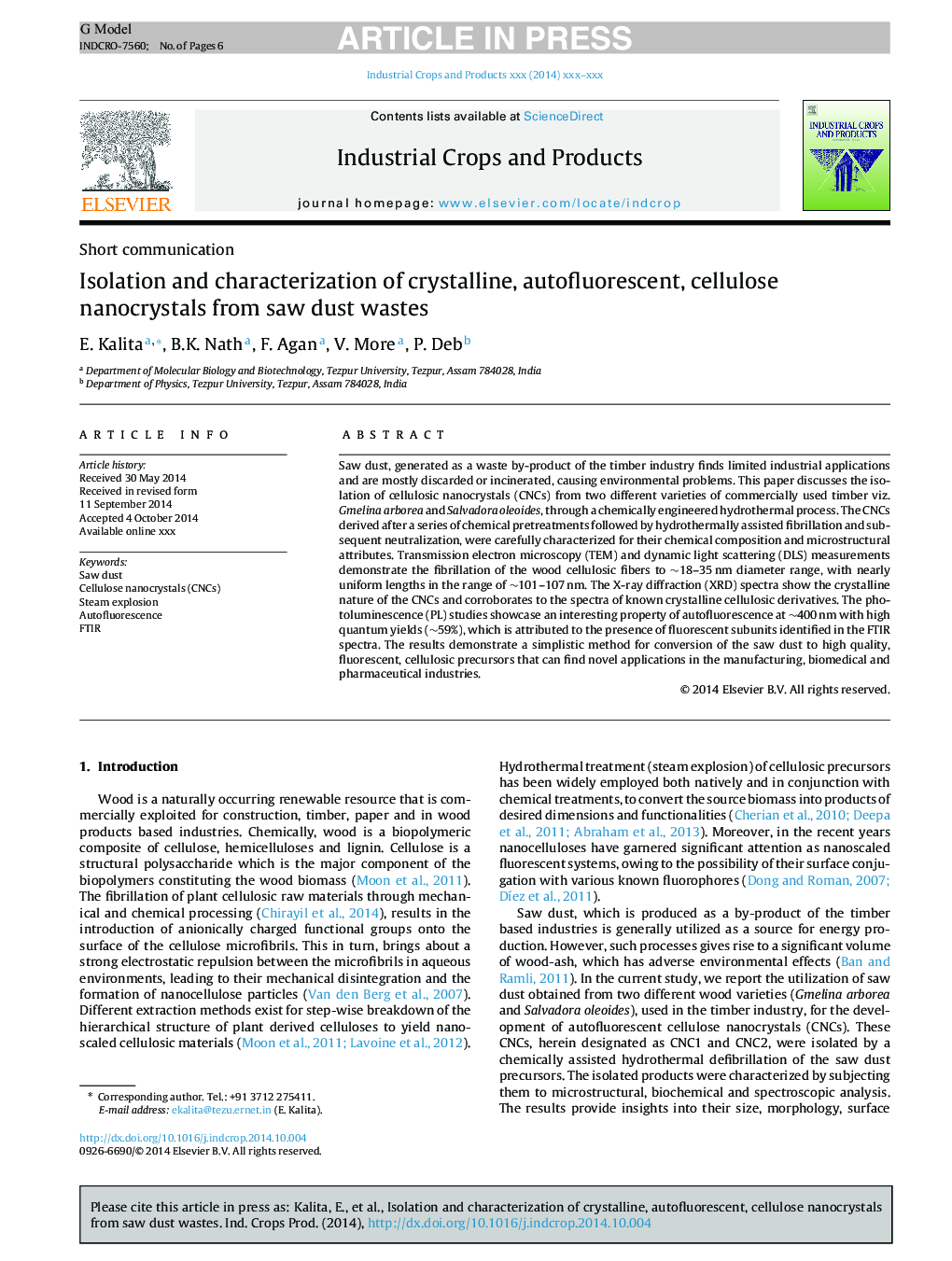| Article ID | Journal | Published Year | Pages | File Type |
|---|---|---|---|---|
| 6376252 | Industrial Crops and Products | 2015 | 6 Pages |
Abstract
Saw dust, generated as a waste by-product of the timber industry finds limited industrial applications and are mostly discarded or incinerated, causing environmental problems. This paper discusses the isolation of cellulosic nanocrystals (CNCs) from two different varieties of commercially used timber viz. Gmelina arborea and Salvadora oleoides, through a chemically engineered hydrothermal process. The CNCs derived after a series of chemical pretreatments followed by hydrothermally assisted fibrillation and subsequent neutralization, were carefully characterized for their chemical composition and microstructural attributes. Transmission electron microscopy (TEM) and dynamic light scattering (DLS) measurements demonstrate the fibrillation of the wood cellulosic fibers to â¼18-35Â nm diameter range, with nearly uniform lengths in the range of â¼101-107Â nm. The X-ray diffraction (XRD) spectra show the crystalline nature of the CNCs and corroborates to the spectra of known crystalline cellulosic derivatives. The photoluminescence (PL) studies showcase an interesting property of autofluorescence at â¼400Â nm with high quantum yields (â¼59%), which is attributed to the presence of fluorescent subunits identified in the FTIR spectra. The results demonstrate a simplistic method for conversion of the saw dust to high quality, fluorescent, cellulosic precursors that can find novel applications in the manufacturing, biomedical and pharmaceutical industries.
Related Topics
Life Sciences
Agricultural and Biological Sciences
Agronomy and Crop Science
Authors
E. Kalita, B.K. Nath, F. Agan, V. More, P. Deb,
